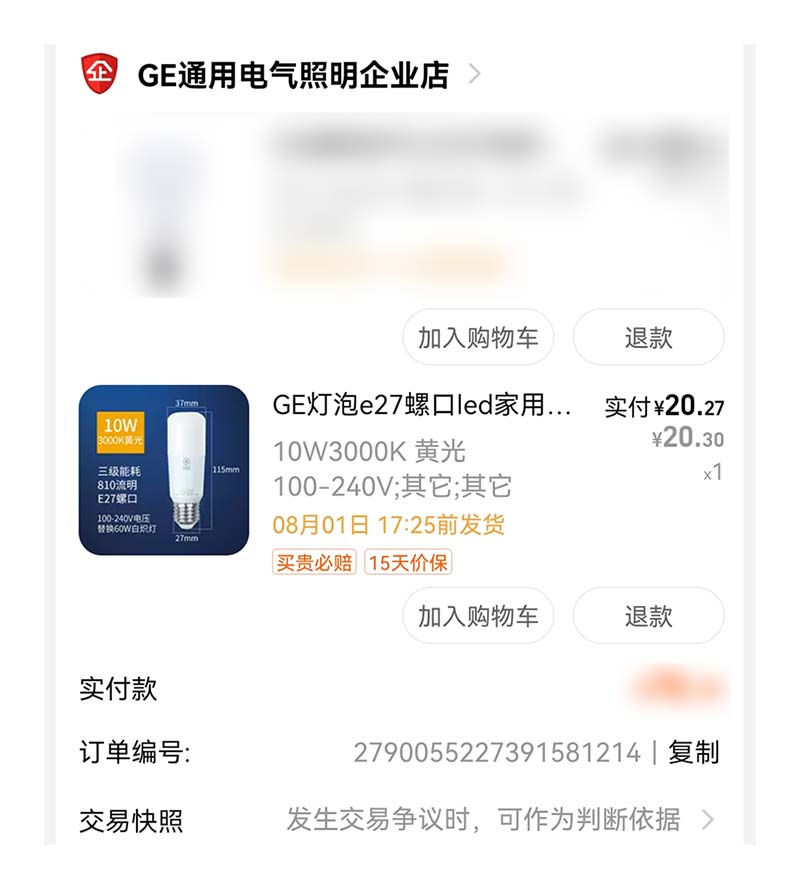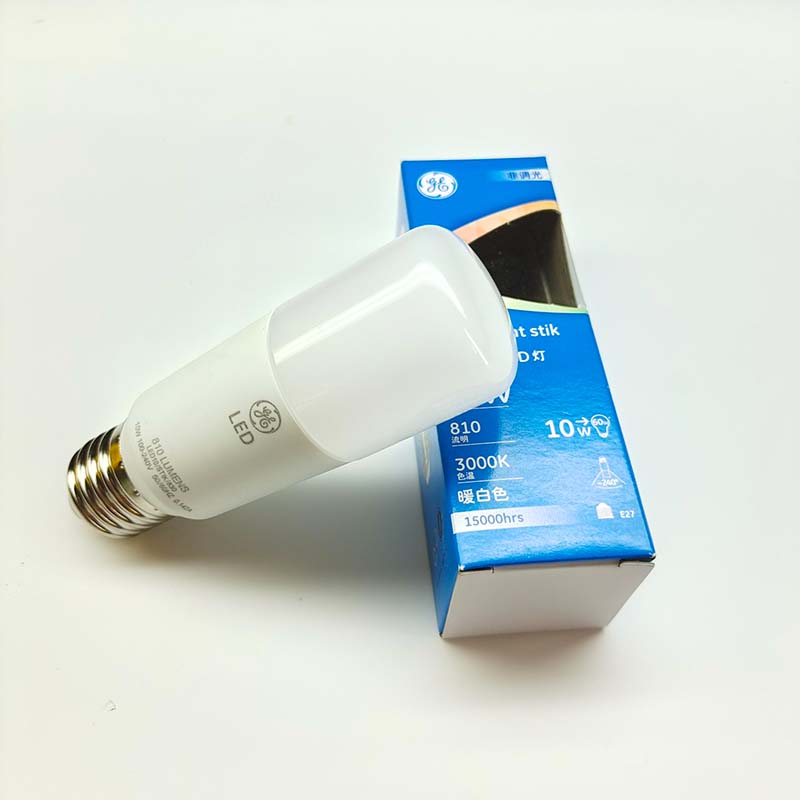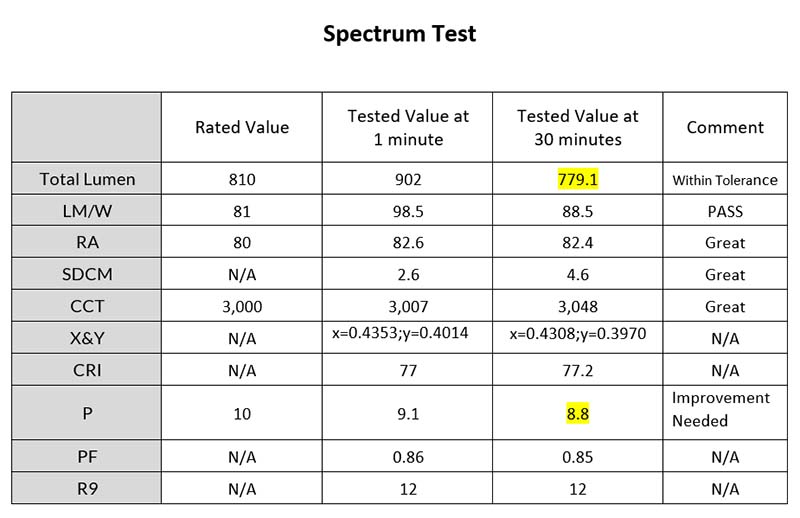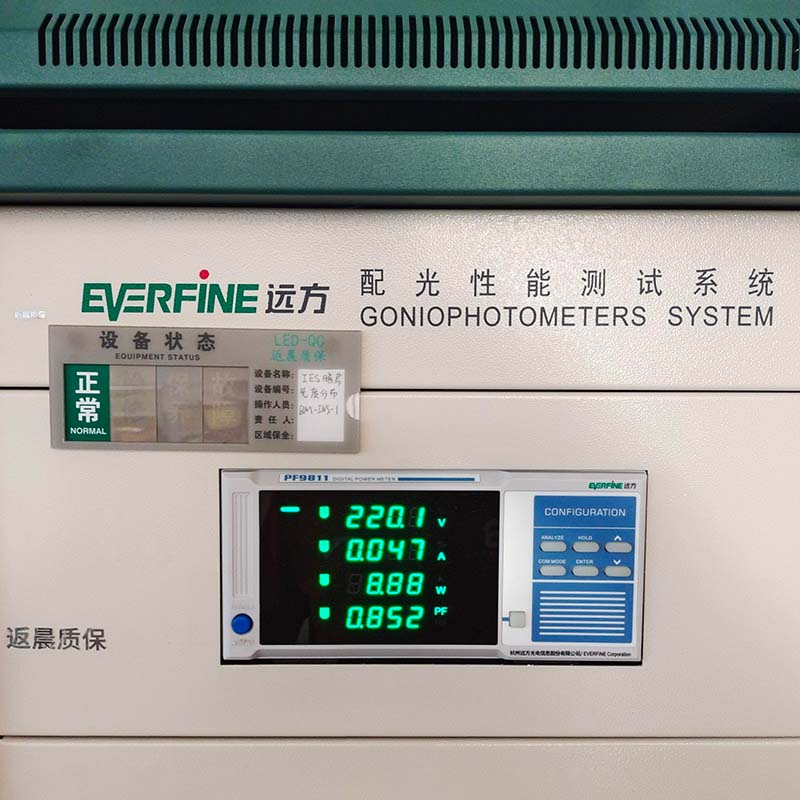GE is special for the lighting industry.
During Thomas Edison’s trip in 1878, he saw the power of electricity to change the world.
He began to think about how to use electricity for work and light.
Later, Edison designed something he named ‘Electric Light’.
In the next year, Edison started working on the first practical light bulbs.
This was the beginning of a product that could illuminate homes and streets.
As technologies evolved, we have had different technologies to make light bulbs.
Now the latest technology is LED lighting.
GE launched a new low-cost LED light bulb – the LED Bright Stik – several years ago.
The cylinder-shaped LED light bulbs seem to be a good choice for basic household lighting.
The package claims to offer a 10W, which equals a 60W incandescent light bulb.
It looks like a solid fit for basic lighting setups, judging from the numbers on its sales package.
As we mentioned at the beginning, GE is special for the lighting industry.
And BackMorning is a third-party quality inspection company focusing on the LED lighting industry.
So, we decide to do some tests to verify this sample, which is from a web store.
Does it offer the same performance as it indicates on the sales package?
Below is some basic information about this sample.
- Model: GE, LED Bright Stik
- Specifications: 10W, 810 LM, 3,000K, 220-240V
- Retail price: CNY 20.30 (Approximately USD 3.00, converted by exchange rate USD/CNY 6.76)
1. First Thing to Consider Before You Buy
LED light bulbs are a common choice for household lighting.
They use less electricity and they’re more efficient.
A major advantage is to help you save money on electricity.
- The sales package indicates that it has a wattage of 10W and 810 Lumens.
- Comparable to a traditional incandescent light bulb of 60W.
Honestly speaking, not an excellent number compared with some other brands of similar types.
However, this LED light bulb has a unique cylinder shape design.
It must have some special applications that it fits well.
We can imagine it can be a good choice for compact work light cages, desk lights, etc.
2. First Impression on Overall Design
The shape of the common light bulbs remained unchanged for more than a century.
It is said that the classic pear shape light bulb was a result of the glass blowing technique.
After the plastic ejection techniques were developed, more designs became available.
It’s not difficult to imagine that people are used to the classic pear shape of light bulbs.
But you can give the new design a try, particularly, it has a slimmer body.
- A slimmer body can mean it takes less space for packing, shipping, and storing.
It’s understandable you are not sure whether this different design affects its performance.
- The quality of the light is not determined by the shapes of its cover.
Therefore, let’s do some professional tests and analyze its values.
They should be able to reveal the truth.
We use some professional instruments to test this GE LED Bright Stik.
BackMorning has been using the same instruments and methods for other famous brands.
We can say the results can be trustable.
Now let’s dive in.
3. Voltage Range
Voltage is an essential parameter for various electronic products.
As for LED light bulbs, we need to make sure they work within an input voltage range.
Don’t buy bulbs with visual issues if the input voltage changes a little bit.
- This GE light bulb sample has a wider applicable voltage range from 100 to 240V.
- That means it can be used directly without a converter in China, Europe, and the USA.
According to the test result, it doesn’t flick or go out within its applicable voltage 100-240Vac.
It meets a fundamental requirement for a qualified LED light bulb.
4. Spectrum Test
Besides the fundamental requirement, we still need it to offer good quality for the light it produces.
For this reason, we do a spectrum test with our integrating sphere to verify the quality of its light.
You will notice there are two tested values in the table.
We do this intentionally to make the values more reliable.
- Usually, electronic materials and components have a lower performance to a certain extent as time goes by.
1). Total Lumen
Total Lumen is a useful indicator for measuring the brightness of a light bulb.
The higher the number of Lumens, the brighter the light bulb.
Here we can see that the sample produces:
- 902 Lumens at 1 minute, which is about 11.4% more than its rated value of 810 Lumens
- 779.1 Lumens at 30 minutes, which is about 3.8% below its rated value of 810 Lumens
After the sample works for 30 minutes, it produces approximately 3.8% less light than its rated value.
We’ve tested some other samples, usually, they give more Total Lumen than their rated values.
That means, the users receive more light for their sales prices, not less.
Comparatively speaking, this result is not great, compared with the common practice among the top players.
But it’s within the acceptable tolerance.
2). LM/W
Another important factor to consider is the efficiency in turning electricity into light.
It is a measurement of how much light a bulb produces per wattage (Lumen/Wattage).
A bigger number of LM/W is more favorable than a smaller number.
You want to choose a more energy-efficient light bulb after all.
- GE has a theoretical value of 81 for its LM/W.
This number is not directly visible on its sales package.
We can calculate based on the numbers on its sales package.
- The first number we got is 98.5 LM/W at 1 minute based on tested values
- And the 2nd value is 88.5 at 30 minutes based on tested values
This sample has higher tested LM/W values than what it implies.
We can say it’s good from this aspect.
Or we say it passes this basic quality inspection.
We’ve tested LED light bulbs from different manufacturers for various brands.
Generally speaking, this test result should be above 100 as a favorable value.
We have to say the energy efficiency of this sample falls behind a little bit.
3). RA
Unquestionably, you don’t just want to see things.
In most cases, you also want to recognize the colors correctly.
For this reason, the parameter Ra for LED lights is important.
The parameter Ra tells you how good a light source is at making colors look accurate and vivid.
Generally speaking, a bigger value of the color rendering index means better quality of the LED light.
- This GE light bulb indicates a rated value of 80 for its Ra.
- The tested value is 82.6, measured at 1 minute
- And the value is 82.4, measured at 30 minutes
The tested values indicate they can be great choices for regular household applications.
Typical applications can be lighting your work benches, garages, floor lamps, etc.
4). SDCM
SDCM measures how far the color of light emitted by a LED light bulb deviates from the target color.
Therefore, the lower the number of SDCM, the more uniform LED light bulbs are.
This difference may not be noticeable if you install each light bulb on one spot.
But if you will need to install more than one light bulb together, then you should consider SDCM.
Make sure the LED light bulbs has an actual SDCM value smaller than 6.
If it has a greater value than 6, the difference between the 2 lights may be noticeable by naked eyes.
- The GE light bulb has an SDCM value of 2.6, measured at 1 minute
- And another value of 4.6, measured at 30 minutes
The results indicate they are worth considering if you need to install multiple of them together.
5). CCT
CCT stands for Correlated Color Temperature, and they are important for creating different feelings.
And they are commonly used to offer a general indication of the apparent “warmth” or “coolness”.
The CCT values of most LED lights are usually within 2,700 K to 6,500 K.
The CCT value is measured in Kelvin (K).
A CCT of 2,700K is more yellowish than 5,000K which is more white.
- The rated CCT value of this GE LED light bulb is 3,000K.
- While the tested CCT value is 3,007K, measured at 1 minute
- And 3,048 K, measured at 30 minutes
GE indicates this parameter quite accurately on its sales package.
You won’t make mistakes if 3,000 K is what you are looking for.
6). Wattage
Wattage indicates how much electricity that light bulb uses.
It is an essential parameter that lays the foundation for how bright a light bulb can be.
For this reason, we still need to pay attention to its value when evaluating LED lights.
- The rated value for this GE light bulb is 10W.
- The tested value is 9.1W measured at 1 minute, 9% less than its rated value.
- While the tested value is 8.8W measured at 30 minutes, 12% less than its rated value.
We know that even the instruments may have issues sometimes.
As a quality inspection, we need to be serious about the results.
- To verify the 2 numbers’ reliability, we use another instrument to test it again.
- The tested value is 8.88W measured at 30 minutes, approximately 11% less than its rated value.
As a common practice, the bottom line for the tolerance is -10% compared with the rated value.
But the tested values are lower than this bottom line.
We have to say, this sample needs improvement, compared to what it claims to be.
5. Conclusion
This budget-friendly GE LED light bulb meets the fundament requirements regarding energy efficiency, color rendering, color temperatures, and color uniformity.
- Theoretically speaking, as a lighting source, giving off sufficient light should be its top priority.
- However, it has an actual wattage even lower than the bottom line of the tolerance.
- And its Total Lumen value is smaller than the rated value.
- We have to say it needs improvement regarding its core function.
Last but not least, BackMorning is a third-party quality inspection company focusing on the LED lighting industry.
It is always our great honor to work with various lighting brands to assure quality.
Send us an email, if you happen to be an owner of a lighting brand or a lighting solution provider.
Look forward to working together to make LED light quality better and better.
Thanks for reading!
Related posts:
 Review on Philips LED Downlight 5.5W DN190B
Review on Philips LED Downlight 5.5W DN190B
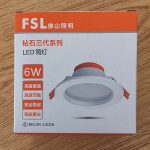 Review on FSL LED Downlight 6.0W MQ3K-LED6
Review on FSL LED Downlight 6.0W MQ3K-LED6
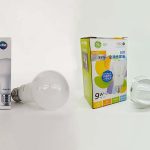 Comparing LED Light Bulb Quality: Philips 10W vs GE 9W
Comparing LED Light Bulb Quality: Philips 10W vs GE 9W
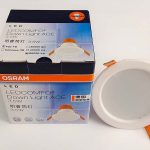 Review on LED Downlight Osram 3.5W 20220808
Review on LED Downlight Osram 3.5W 20220808
 Test and Show High Quality Streetlight T12A-2 – Shape and Structure
Test and Show High Quality Streetlight T12A-2 – Shape and Structure
 LED Strip Lights’ Quality, how to test in a professional way?
LED Strip Lights’ Quality, how to test in a professional way?



